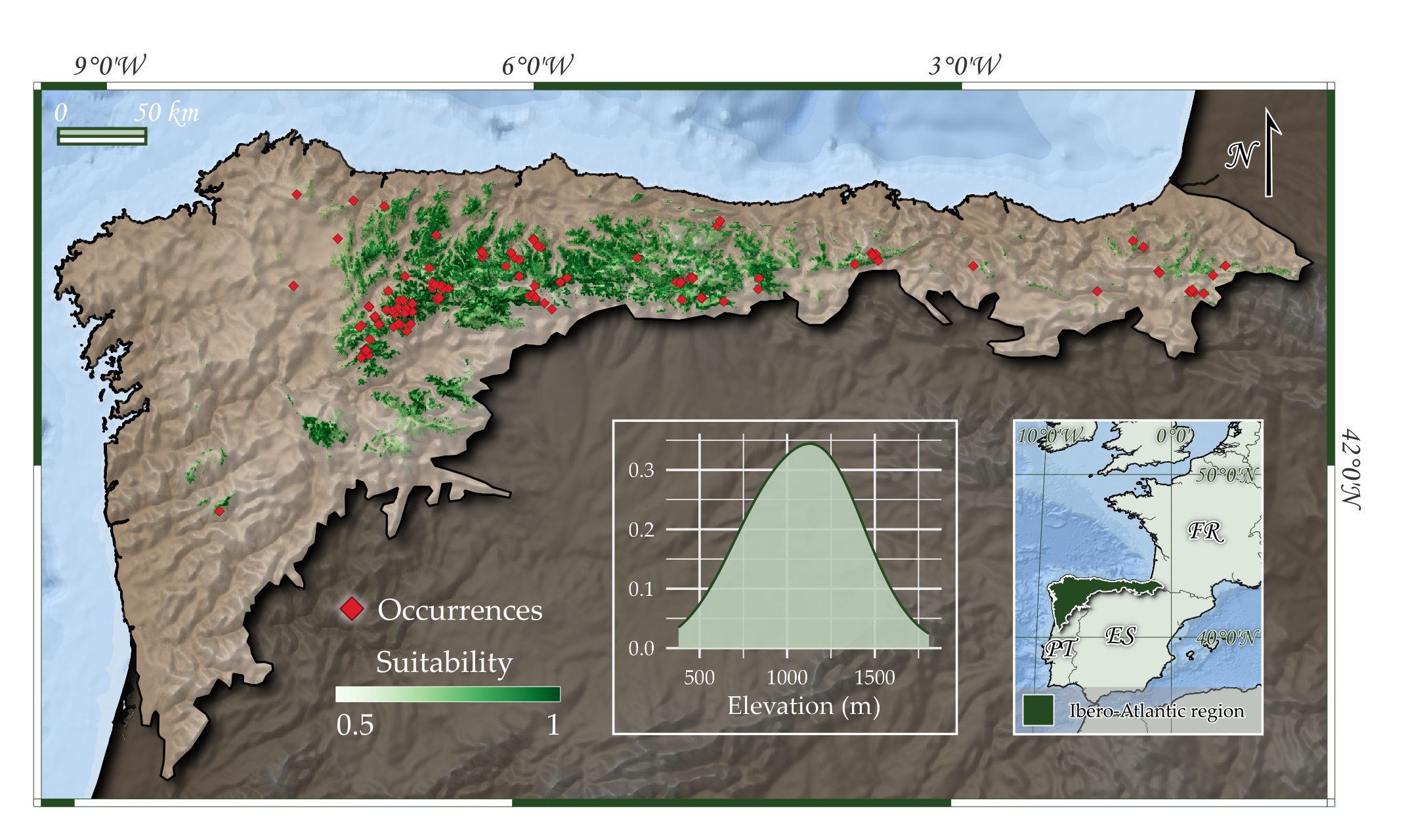T1By Mountain Quercus forests on acid soils
Description
These forests replace T182 when any combination of comparatively abrupt terrain, rocky soil, southerly aspect and relatively sunny and dry summers (as happens in the westernmost sector of the Cantabrian mountains, where these forests, especially under the form of scrubby formations dominated by Quercus orocantabrica, reach the treeline) increases the risk of beeches failing to support their high transpiration needs. If those comparatively dry conditions deepen, T19A comes to prevail. They correspond to the in our view far too analytically considered EUNIS unit T1B623 (“Oro-Cantabrian acidophilous oak forests), lumped by EUNIS with our T1Bx but actually more related to T1B3 (“Atlantic Quercus petraea forests), restricted by EUNIS to the British Isles. To resolve such issues, a new level IV regional unit is created.
Floristic Composition
Frequent species
Indicator species
Phytosociology
- Avenello ibericae-Quercetum orocantabricae
- Linario triornithophorae-Quercetum petraeae
- Luzulo henriquesii-Quercetum petraeae
- Pulmonario longifoliae-Quercetum petraeae
Regional distribution
